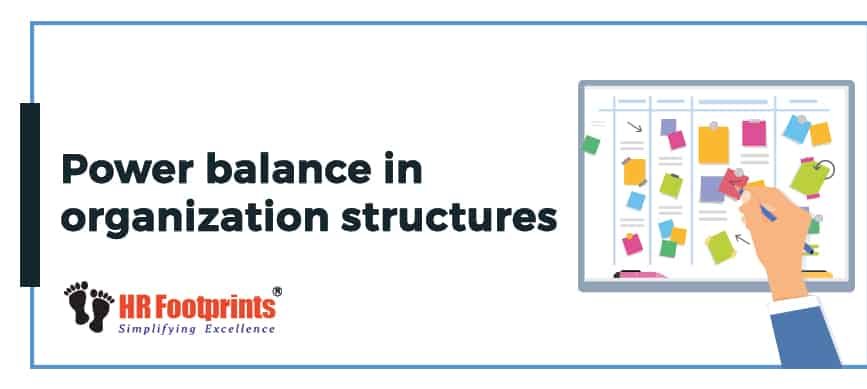Before we understand the need for power balance in organization structuring we must understand the factors that influence the organization structure. We must understand why it is important that the structuring is done right. One of the most critical exercises that organizations carry out is “Structuring”. It is always intriguing to understand the best way to organize various businesses or functions or departments. Ideally we all know that structure should follow strategy. For example, a company that is expanding to multiple markets for growth need to reorganize itself accordingly by creating marketing and sales teams in respective geographies. Beyond strategy, there seem to be several others factors that need to play on the structure.
What are the factors that must be considered while structuring?
Critical Success factors: Understand closely the business model and analyze the critical success factors. For example, in an industry, speed to market determines the success of the company. In another company, a collaborative effort in solving a customer complaint is critical. Your structure should factor in these factors.
Customer as a stakeholder: While structuring is an internal matter, it impacts the customer. Particularly if you are in a business that requires close customer interface, taking the customer into confidence is extremely important. Your internal structure should not cause external inconvenience.
Cohesive business process: Designing a structure around a cohesive business process helps in defining the accountability. For example, if a planning person operates away from procurement function, then we will have gaps in coordination. It may then make sense to integrate planning and procurement functions under one roof so that it will be a cohesive business process that can work seamlessly.
Where does POWER figure?
A more important factor however seems to be how the ‘power’ is balanced across the organization. The way different business functions are pitched against each other by design is to balance the power and to introduce a healthy management control. For example, if finance is overseeing the credit limits offered by the sales people, it is meant to safeguard the receivables. If sales team raises a flag against production department for want of output, it is intended to serve the customer better with on time supplies.
What happens when ‘power’ gets centralized and does not get distributed? What happens when there is no power balance in the organization?
Instead of pitching one function against the other and thereby safeguarding the interest of the business and driving efficiencies, sometimes organizations create ‘concentric power centers’. In other words, they create individuals or positions that will exercise all the power and will not have any controls on them. If leaders in such positions happen to be high on integrity, then they will exercise self-restraint. More often, however, such power corrupts best of the leaders and they end up misusing the power.
Why do organizations end up creating such power centers?
One expectation is to offer all the power and then expect accountability for results. When you do so, however, one should realize that power gets (mis) used first and then one hopes to have results. What if power gets misused and we do not get results? In such a scenario, the damage to the organization is enormous. To restore the structure with more sensible power distribution and to resurrect the morale of the managers, organizations need to expend significant energy.
It is therefore pragmatic to ensure power balance in organization structuring !




